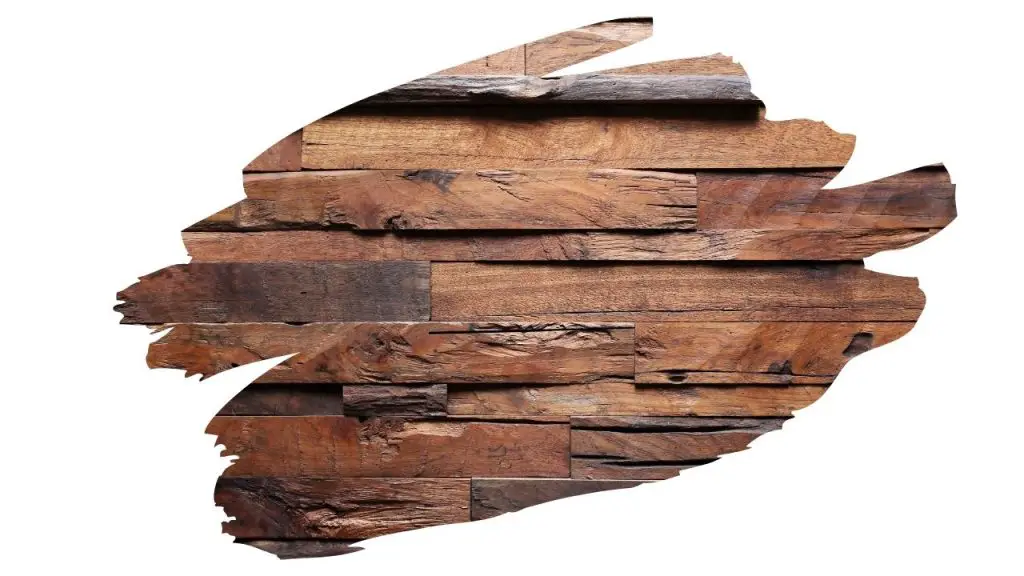There are a lot of benefits to using pressure treated wood. As a result of deep chemical treatment, pressure treated lumber becomes particularly resistant to damp, rot and insects. Which makes this type of treated wood perfect for garden structures like fencing and picnic tables.
However, this does not mean that pressure treated wood isn’t without its own set of problems.
For example, how do you dry pressure treated wood without warping?
If you want to dry pressure treated wood quickly (without it warping horribly), there are a couple of things you can try;
1). Use A Wood Kiln: Dry out the wood using a dehumidifying kiln, but be careful not to dry out the wood to the point of cracking.
2). Lay Out The Wood Flat: Stack the pressure-treated wood in a criss-cross pattern to allow it to air-dry. This is best done during warm, low humidity weather.
But there are a number of other things you need to consider, if you want to prevent the wood from warping.
Keep reading to discover everything you need to know about drying pressure treated wood:

This post may contain affiliate links to products that we receive a commission for (at no additional cost to you). Learn more here.
How Long Does Pressure Treated Wood Take To Dry?
With unseasoned wood (this is wood that hasn’t been kiln-dried before purchase), it can take a really long while to dry it out. We are not talking days or weeks here… but more like months on end. Six months to be exact.
If you want to learn more about how to dry out unseasoned wood, check out my article here: How Long Does It Take Wood To Dry | Plus 5 Quick Tips
However, when it comes to pressure-treated wood, the lumber in this case will already be kiln-dried.
Generally ‘shop-dry’ pressure treated wood takes around 72hrs to dry enough for you to start painting or staining it. Shop-dry pressure treated wood refers to treated lumber that’s been sat in the shop for a good while. Otherwise, it can take anywhere from 3 to 6 months for freshly treated lumber to dry out enough to take on stain or paint.
How To Check If Pressure Treated Wood Is Dry: Spritz a bit of water onto the wood. If the wood soaks up the water, that means that it is all dried out and good to go. However, if that spray of water runs right off the wood (or settles on it as water droplets), then you need to give the wood more time to dry.
Wait A Second… How Can You Tell If Wood Is Pressure Treated?
Simply keep an eye out for a stamp that clearly shows it’s been treated. In the US, UK, and Canada, the stamps to look for are “GC” (Ground Contact) or “PT” (Pressure Treated).
Just don’t get those mixed up with other stamps like HT (Heat Treated), KD (Kiln Dried) or DB (Debarked). Lumber with these stamps have been put through a different chemical-free heat treatment process instead.
The great thing about heat-treated pallets is that no harsh chemicals are used on them. Instead, they’re just exposed to high heat to kill off any bugs or mold.
And since there’s no risk of chemical residue, heat treated wood is actually safe to bring inside your home for projects. You can even burn it in your fireplace if you want (a topic that we dive into over here: Are Heat Treated Pallets Safe To Burn As Firewood?).
But there is a trade-off; that wood won’t hold up as well outside over time compared to pressure treated wood. You can learn more about that here in our post: Is Pallet Wood Safe To Use Indoors?
Related Post: Does Cypress Wood Need To Be Treated? (5 Key Things You Should Know)
Should You Let Pressure Treated Wood Dry Before Using It?
Yes, you should let pressure treated wood dry completely before you start applying any paint or wood stain to it. And here’s why. When wood is wet, all of that moisture causes the wood to expand (kind of like a sponge).
As the wood starts to dry out, it shrinks and contracts. That expansion/contraction movement is what causes the wood to warp.
All of that warping will cause cracks, splits, and gaps to appear all along the grain of the wood.
So always make sure that timber is dry before you get to work!
Related Post: Can You Stain Landscape Timbers? (+ Our Top Time Saving Hacks)
Building With Wet Pressure Treated Lumber (Can It Be Done?)
Okay, so maybe you don’t have any plans to start painting or staining the wood immediately. However, you really want to start building your woodwork project as soon as possible.
In theory, yes you can build with wet pressure treated lumber. Any wood – wet or dry – can be used to create wood crafts and structures.
However, if the wood is particularly soaked through, you could find yourself having issues with slippage (i.e. power tools spinning off the surface).
Also, as the wood eventually dries, it will start to shrink – which can throw off your measurements as the wood board shortens.
How To Speed Up Drying Of Pressure Treated Wood (2 Quick Ideas)
1). Kiln Dried Pressure Treated Lumber (Do It Yourself – Kiln Drying Method)
If you’ve bought the wood from a half-decent lumber yard, then they should have already kiln-dried it for you. This is called KDAT wood (Kiln Dried After Treatment).
All you need to do with shop-dry KDAT wood is wait 2-3 days before working on it.
However, if the wood is still wet after 3+ days, you need to;
- A) Immediately find a better lumber yard to buy from in future, and…
- B) Use a wood kiln to dry the lumber yourself.
Kiln-dried wood involves drying the wood in a ‘kiln’ oven until the moisture content in the wood falls down to your desired level.
If you decide to use the Kiln Drying Method, you have two choices; you can build your own kiln or you can buy one.
Building your own DIY wood kiln is obviously cheaper than buying one, and best of all, it is not difficult to make.
Check out FarmCraft101’s DIY Wood Kiln tutorial below to learn how to turn any dehumidifier into a simple home-spun kiln.
2). Wood Stacking (Do It Yourself – Air-Drying Method)
Simple, easy, and highly effective (when done right), air drying pressure treated lumber may take longer, but this method won’t disappoint.
If you have the space to properly stack all of that timber, then watch Matthew Cremona’s video guide below to learn how to put this method to good use:
Final Thoughts
When you want to dry pressure treated wood without it warping, you have two easy options to choose from;
- You can dry out the wood using a home-made wood kiln.
- Or you can stack the wood in a dry place and let it dry out naturally over 2-3 days.
But remember to be careful not to over-dry the wood (especially when kiln-drying), unless you want to end up having to work with cracked splinter-prone lumber.



